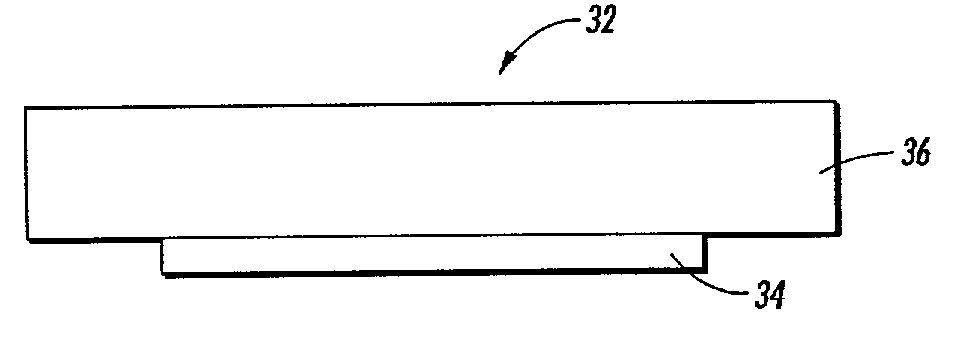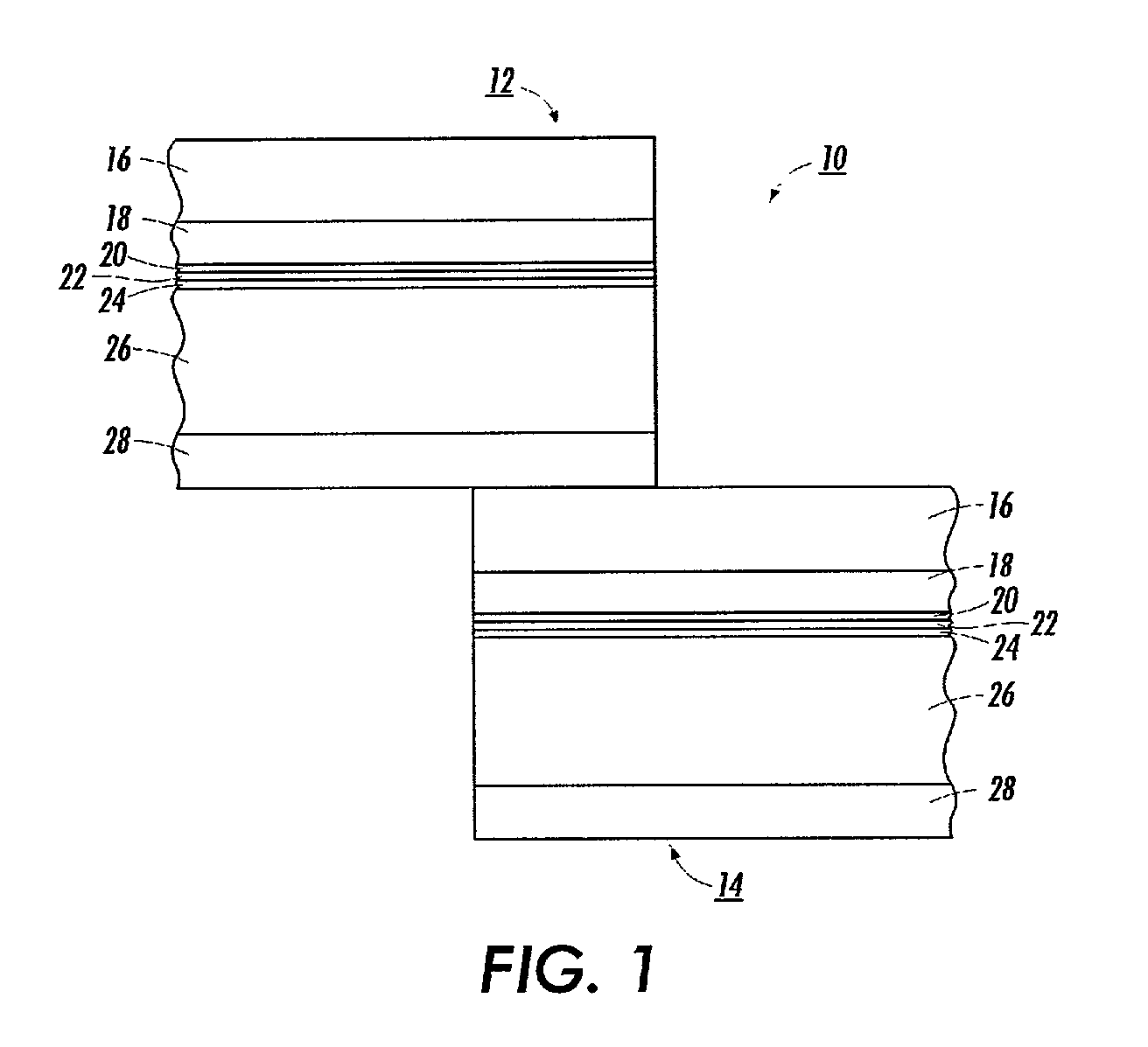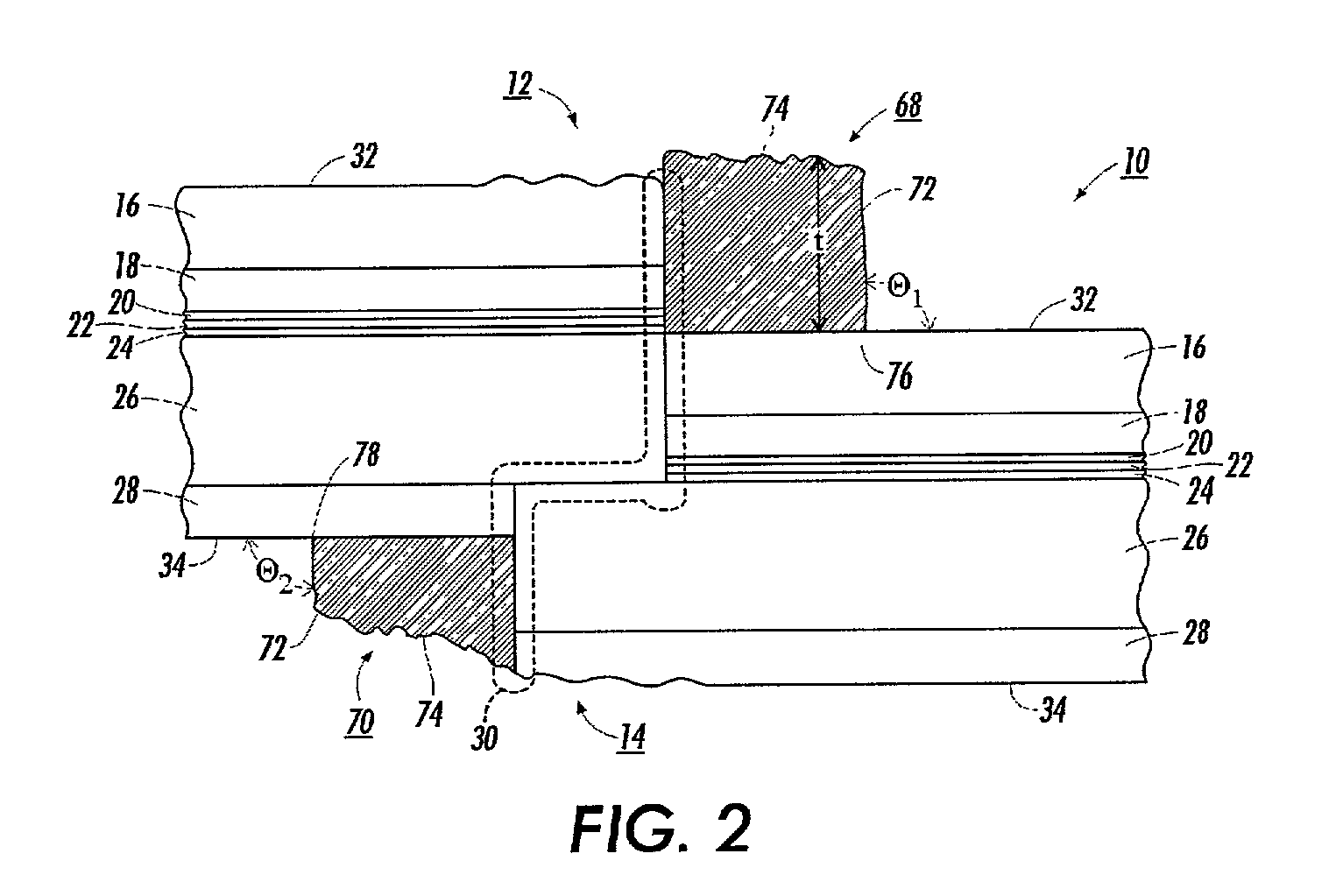Flexible imaging member seam treatment article and preparation method thereof
- Summary
- Abstract
- Description
- Claims
- Application Information
AI Technical Summary
Benefits of technology
Problems solved by technology
Method used
Image
Examples
example ii
Treatment Article Preparation and Application No Substrate
[0082] Six thermoplastic polymercoating solutions were prepared by dissolving Makrolon 5705 polycarbonate with varying amount of charge transport compound N,N'-diphenyl-N,N'-bis(3-methylphenyl)-1,1'-biphenyl-4-,4'-diamine in methylene chloride. The prepared solutions were each applied over a releasing substrate and dried at 257.degree. F. (125.degree. C.) in an air circulating oven for 5 minutes to rid the solvent and then removed from the release substrates to give thermoplastic polymer layers containing 0% wt, 10% wt, 20% wt, 30% wt, 40% wt, and 50% wt charge transport compound in each respective 25 micrometer thick layer. The thermoplastic polymer layers were each analyzed for glass transition temperature, T.sub.g, using differential scanning calorimetric method. The results obtained, listed in the table below, showed that the addition of charge transport compound to the Makrolon could provide successive suppression of the...
example iii
Treatment Article Prepration and Application Substrate
[0084] A coating solution, prepared by dissolving 10 grams of Makrolon in 90 grams of solvent mixture consisting of 90 parts of methylene chloride and 10 parts of toluene, was applied to a 3-mil thick, biaxially-oriented PET substrate by hand coating using a Bird applicator. The coated wet Makrolon layer was allowed to dry under room ambient conditions for 15 hours to produce a 35-micrometer thick solid polymer layer containing 60% by weight Makrolon and approximately 40% by weight toluene, with only a small amount of residual methylene chloride since toluene was much less volatile than methylene chloride. The resulting coating layer over PET substrate was cut to give an 8 mm width strip. The coating layer in this 8 mm strip was cut at both sides, through only the Makrolon layer not the PET, to remove 2 mm of Makrolon coating layer from each side to create a laminator strip 32, like that illustrated in FIG. 4, which consists of a...
example iv
Treatment Article Preparation & Application Solution of Example II on Substrate; IR Lamp and Wheel on Tube
[0086] A laminator strip 32 was prepared, using a coating solution according to Example II and a 3-mil thick biaxially oriented PET substrate, according to the procedures described in Example III, to give a 25-micrometer thick polymer laminate 34, containing 70% by weight Makrolon and 30% by weight charge transport compound, over PET carrier substrate 36. The surface of laminate 34 of the prepared laminator strip 32 was first brushed (using a small soft paint brush) with small amount of methylene chloride to moisten the surface and thereby promote some adhesion to the seam region surface for ease of anchoring the laminator strip 32 directly onto the seam of the third welded electrophotographic imaging member of Example I, which was held down over a 2-inch diameter tube 90 as illustrated in FIG. 7. The overcoating / lamination processing used an IR heat source 103 to provide a focu...
PUM
| Property | Measurement | Unit |
|---|---|---|
| Temperature | aaaaa | aaaaa |
| Pressure | aaaaa | aaaaa |
| Electrical resistance | aaaaa | aaaaa |
Abstract
Description
Claims
Application Information
 Login to View More
Login to View More - R&D
- Intellectual Property
- Life Sciences
- Materials
- Tech Scout
- Unparalleled Data Quality
- Higher Quality Content
- 60% Fewer Hallucinations
Browse by: Latest US Patents, China's latest patents, Technical Efficacy Thesaurus, Application Domain, Technology Topic, Popular Technical Reports.
© 2025 PatSnap. All rights reserved.Legal|Privacy policy|Modern Slavery Act Transparency Statement|Sitemap|About US| Contact US: help@patsnap.com



